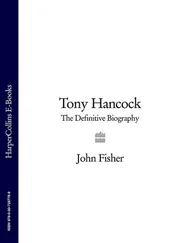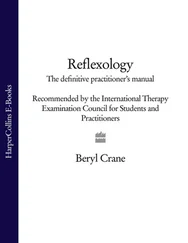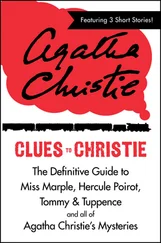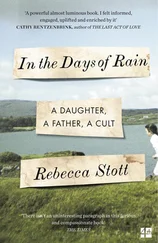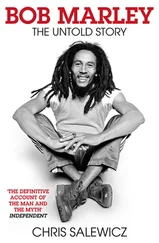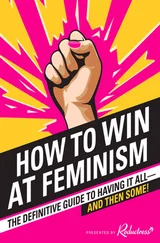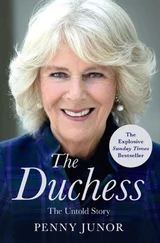Jimmy Page finally moved away from his childhood home. First, he took the flat off Holland Road in Kensington. But part of the mood of the age was the need to connect communally with the essence of the earth, a need that would later be expressed by the likes of the Band, who creatively isolated themselves in Woodstock in upstate New York, and the English group Traffic, fronted by Page’s friend Steve Winwood, who wanted to ‘get it together’ in a cottage in rural Berkshire.
And it was to that same verdant county of Berkshire that Page now moved. Kenneth Grahame, author of the children’s classic The Wind in the Willows , had retired to Pangbourne, situated on the River Pang four miles west of Reading, in later life, and now Page made the village his home, buying a former boathouse on the river, water frequently being close to the homes he would purchase, solace for his Scorpio rising. Later, he would develop a reputation for being to some extent a recluse; it was here that such an existence was first nurtured, one he found creatively beneficial. ‘I really enjoyed that bachelor existence – working and creating music, and going out on my boat at night on my own; switching off the engine and just coasting in the twilight. I liked all that,’ he told the Sunday Times . His tank of tropical fish survived the journey from west London, although his long absences away on the road eventually obliged him to give up this hobby.
And anyway, Page was almost straightaway off on the road again. This time it was to the United States.
That same month, June 1966, someone else demonstrated an intriguing element of experimental good taste – unsurprisingly, given that the record was produced by Shel Talmy, Page’s longtime studio champion, a master of innovation. ‘Making Time’, the stunning, sneering tune in question, was released by a Hertfordshire group called the Creation; Eddie Phillips, the guitarist, would at times play his instrument with a violin bow. It has long been alleged that Page took note of this and copied the effect. ‘Eddie Phillips deserves to be up there as one of the great rock ’n’ roll guitarists of our time, and he’s hardly ever mentioned,’ said Talmy. ‘He was one of the most innovative guitarists I’ve ever run across. Jimmy Page stole the bowing bit of the guitar from Eddie. Eddie was phenomenal.’
However, Page claims another source for the inspiration. At the Burt Bacharach session he played on, David McCallum, Sr., another session player, who played violin with both the London Philharmonic and Royal Philharmonic orchestras and was father of the co-star of the hit television series The Man from U.N.C.L.E. , asked the guitarist if he had tried to bow his instrument as though it were a violin. Page borrowed the violinist’s bow – a wand finding its own wizard – and had a go, in front of McCallum. ‘Whatever squeaks I made sort of intrigued me. I didn’t really start developing the technique for quite some time later, but he was the guy who turned me on to the idea.’
The summer months of 1966 were a pivotal time for much of ‘Swinging London’, as Time magazine had dubbed the city. In May, at the NME Poll Winners’ Concert at Wembley’s Empire Pool, the Beatles played what would prove to be their last ever live show in Britain. However, as far as viewers of the televised broadcast of the NME poll were concerned, the Yardbirds closed the concert. Acting on a perverse whim, Andrew Loog Oldham decided that the Rolling Stones’ segment should not be broadcast. When Beatles manager Brian Epstein learned of this, he also demanded – for anxious reasons of ‘cool’ status – that the Beatles be kept off the TV, thereby depriving viewers of the Beatles’ last scheduled live performance in the UK.
Only a few weeks after Page joined the Yardbirds came the debut performance of an act that would seismically shift the entire music scene. On 29 July 1966 Cream – which Clapton had formed with drummer Ginger Baker and bassist and vocalist Jack Bruce – performed their first ever stage show, at Manchester’s Twisted Wheel, a venue more accustomed to hosting pill-popping Mod all-nighters, itself an indicator of changing times. Within a year Cream would be touring the United States to enormous acclaim, and, in a new twist, long-haired and stoned American audiences would reverently sit cross-legged on ballroom floors as Clapton tore through epic, frequently self-indulgent, guitar solos.
The day after the first Cream gig, on 30 July 1966, England won the football World Cup for the first time, on home soil, and national confidence surged. And by the end of the year another power trio, the Jimi Hendrix Experience, were ferociously tearing up and down the UK’s venues and charts, with their first hit ‘Hey Joe’ and sensational live performances.
Following that Wembley NME date, the Rolling Stones were on something of a hiatus. Anita Pallenberg, Brian Jones’s girlfriend, had bought a flat at 1 Courtfield Road, behind Gloucester Road tube station, and the Rolling Stone had moved in with her. Like several women in this rarefied bohemian milieu, Anita had about her an intriguing high-priestess aspect; she was attracted to the occult and was rarely without a bag containing rolling papers, tarot cards and occasionally the odd bone. Christopher Gibbs, a fashionable Chelsea art and antiques dealer, had insisted to Anita that she must buy the property, which only had one room and a set of stairs leading to a minstrel’s gallery that formed a bedroom of sorts.
Page had been friendly with the Rolling Stones, especially Brian Jones, since he first saw them at Ealing Jazz Club four years earlier. Now, in those first months with the Yardbirds, he was an occasional visitor to the Courtfield Road flat, along with Keith Richards and Tara Browne, the Guinness heir who would be dead by the end of the year, crashing his Lotus Elan after leaving the flat, his death celebrated in the Beatles’ ‘A Day in the Life’. It was at 1 Courtfield Road that Jones and Pallenberg began to regularly ingest LSD, soon introducing Richards to its glimpses of another reality. It is unlikely that Page, who developed a fondness for psychedelic drugs and was no longer confined by the rigidity of session work’s time constraints, did not also enter this arcane coterie.
Through Robert Fraser, a Mayfair art dealer and major player in the Swinging London scene, the trio of Jones, Pallenberg and Richards became friends with the revered independent filmmaker and occultist Kenneth Anger, a disciple of Aleister Crowley. Anger’s very beautiful short movies, marinaded in metaphysical matters, were like visual poems. Anger’s use of pop music to tell the story in his films would prove to be hugely influential. Martin Scorsese would replicate it in his breakthrough film Mean Streets , and Anger used Bobby Vinton’s ‘Blue Velvet’ in his 1963 movie Scorpio Rising , 23 years before David Lynch’s film Blue Velvet . Anger considered Pallenberg to be ‘a witch’ – in turn she claimed that everything she knew about witchcraft had been learned from the filmmaker – and Brian Jones too, and that ‘the occult unit within the Stones was Keith and Anita and Brian’. Keith had been turned on to such matters by Anita, and the pair would soon become lovers. A principal consequence of such out-on-the-edge thinking was the writing and recording of the Rolling Stones’ ‘Sympathy for the Devil’, a song that – as Altamont would suggest – may not have been without its consequences. Page was yet to meet Kenneth Anger. But when he finally did, some years later, it began a relationship also not without penalties.
At the beginning of August 1966 the Yardbirds went into IBC Studios to record a new single, with Simon Napier-Bell at the production helm. Although ‘Happenings Ten Years Time Ago’, as the song was titled, came from the germ of an idea that Page and Keith Relf had come up with, the composing credits for the song would be attributed to all five group members. ‘Happenings Ten Years Time Ago’ would be the most psychedelic of all the Yardbirds’ singles. Like a pointer to the future there were dual lead guitars on the record, Page and Jeff Beck, and so Page once more brought in his friend John Paul Jones to play bass. Beck, who had been suffering from ill health, added his own guitar parts later, along with a piece of spoken-word absurdism based on his experiences in a sexual health clinic. Aside from this whimsy, the lyrics themselves had considerable poignancy, relating to experiences of déjà vu or even of past-life existences – appropriately complex subject matter as the pop-based first half of the 1960s gave way to the rockier second half.
Читать дальше



